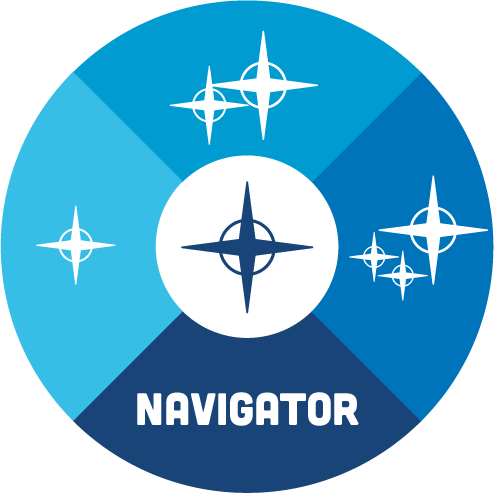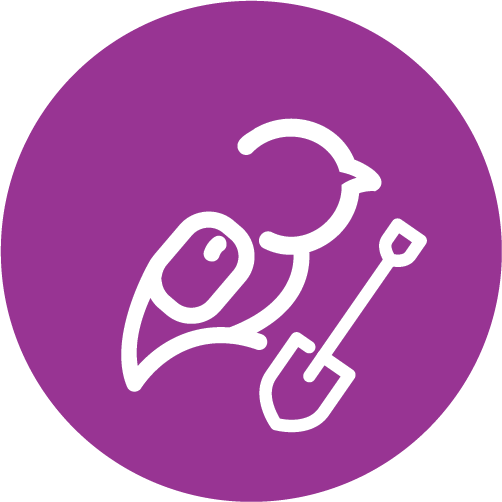
 What is Information Literacy?
What is Information Literacy?
Information literacy is the ability to source information, manage the information, evaluate the relevance of information, and to apply relevant information to solve problems. Information literacy is essentially the ability to locate the information needed to answer one’s own questions, or to locate contact information for someone who has the answers.
 Why does Information Literacy Matter to Students?
Why does Information Literacy Matter to Students?
Information literacy is an important skill-set for students to learn because it contributes to independence, adaptability, and problem-solving skills, which are all requisites for employability and life-long success.
 The Wicked Problem: Lost at Sea
The Wicked Problem: Lost at Sea
Have a look back at the Wicked Problem that we introduced at the beginning of the module for a refresher: Lost at Sea, by Molly Flindall-Hanna (opens in new window).
 Activities: Navigate Information and Pathways Your Way
Activities: Navigate Information and Pathways Your Way
By the end of these activities, you will be able to gain clarity about the pathways and requirements of your program.
- Navigate your personal pathway from registration to graduation and beyond
- Identify unique requirements as an international student
- Locate information within your LMS and course materials
- Identify who to contact and where to find information on a college/university website
Level 1: What you can do to help yourself
Where can I find specific information on a College/University website?
Task: Learning to Navigate the College/University website to source information
Time commitment:
This activity may take 2 hours to complete. More if you attend some activities!
Steps to Complete
- Register for, and attend student orientation activities.
- Often these activities include a virtual scavenger hunt, which will help you orient and navigate the website
- Often, colleges and universities have YouTube videos that show how to find information on their website. Search your institution on YouTube to see if they have “How-to” demonstrations
- Watch the video below, for an example from Athabasca University.
- Go to the library website. When in doubt, always ask a librarian, they know how to find resources and services.
- Libraries sometimes offer workshops that can help new students navigate university life.
 Dig Deeper
Dig Deeper
Have a look at these resources to dig deeper into navigation of institutional websites.
- Example of a Support Services tour video from Athabasca University
- Learning Management Systems, from The Learning Portal
Success Checklist
You will know that you have successfully completed this activity when:
- You’ve attended orientation events/activities
- You’ve researched workshops offered at the institution’s library
- You’ve watched your institutions how-to videos (if applicable).
Level 2: What you can do to speak to someone else for help
Where can I find a program-specific advisor, and how can I meet them?
Task: Book an appointment with an advisor
Time commitment:
This activity may take between 15 minutes and 1 hour to complete.
Steps to Complete
- Find the staff contact list for your program on the department website
- Identify the program advisor and their contact information
- Email them directly, or book an appointment to speak with your program advisor
- Write down a list of lingering questions you have about the program/school/services
- Bring the questions with you to the appointment
 Dig Deeper
Dig Deeper
Have a look at these additional resources.
Success Checklist
You will know that you have successfully completed this activity when:
- You’ve booked an appointment with your program advisor
- Your list of questions is answered and/or the program advisor has pointed you in the right direction to have them answered.
Level 3 – What you can do to connect with other students
Where can I network with other students, and find clubs and associations that offer helpful services?
Task: Join or form a departmental club to help orient new students, or partner with your school’s student association to plan useful orientation activities.
Time commitment:
This activity may be an ongoing commitment.
Steps to Complete
- Using a similar online search to the other tasks, see if any academic groups or societies exist for students on your campus that you’d like to join.
- If not, you can create a student club and/or approach your student association about a partnership.
- Design activities from a student perspective that will help new students with orientation.
- Host club meetings, workshops, or orientation activities.
 Dig Deeper
Dig Deeper
Have a look at these additional resources.
- An example of the student club forming process at the University of Waterloo
- Resources on Planning Orientation Events from UBC
Success Checklist
You will know that you have successfully completed this activity when:
- You’ve joined or formed a student club
- You’ve met with your student association regarding planning orientation activities
- You’ve participated in orientation activities

